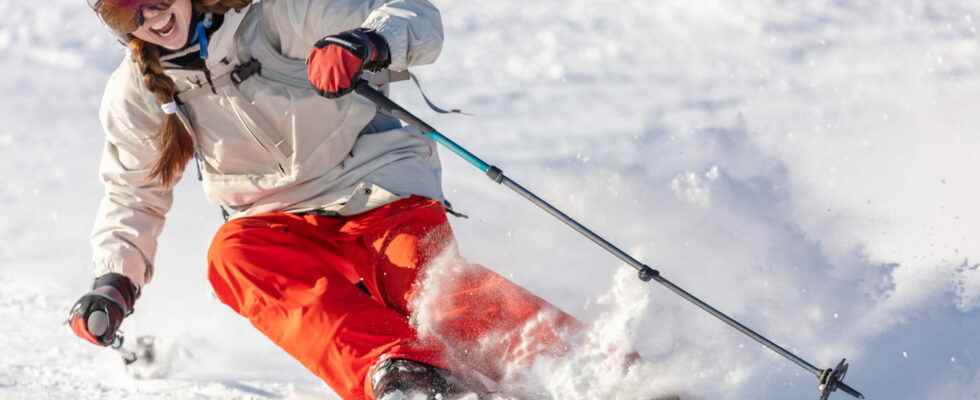Skiing puts a strain on your muscles and the altitude of the mountain affects your cardio. Physical preparation before leaving is strongly recommended. How to prepare your knees and train your thighs? His heart ? What bodybuilding exercises to do?
Why should you train before going skiing?
Skiing is a sport that engages all muscle mass. “You are always squatting, unusual position for the body“, specifies Antoine Muchir, researcher at the Institute of Myology. training before skiing is necessary in order to avoid injury or the risk of strain. “It is also necessary prepare your body for the altitude of Mountain. When you are at altitude (about 2000 meters on average), oxygen supply becomes scarce with each breath due to low atmospheric pressure. However, it is an essential element for the proper functioning of your body (heart and muscles). During physical exertion, your body needs the same volume of oxygen. To compensate, you will breathe faster and your heart rate will increase which tires the body” explains Antoine Muchir. “In the best case, it should prepare going to the mountain a few days before to allow the body to get used to it. I recommend totake it step by step on the first daynot to force the muscles, to take your time.“
What muscles are used when skiing?
Several muscles are used when skiing: those of the ankles, knees, hamstrings, thighs, glutes, back and abs. The quadriceps are particularly stressed on ski descents. They stabilize with the help of the 3 hamstring muscles – the semimembranosus, the semitendinosus and the biceps femoris – the knees. The snowboard enthusiasts mobilize more muscles to sit down, bend down, take off one foot, get up…
“I recommend doing a muscle building 15 days before departure, approximately 3 times a week“ says Antoine Muchir. “You have to train your ankles and knees via flamingo exercise : you raise one foot and lower yourself slowly, several times in a row. For strengthening the legs, squats and the chair exercise engage these muscles.
Or survey exercise : you are sitting on a chair and you have to use only one leg to get up. To train the calves, step exercise is indicated: you put your toes on a step and you raise your heels in a vacuum. To target the quadriceps and hamstrings, mount them stairs. Parisians can for example go to Montmartre by taking the path by the stairs. the pilates is also indicated because it is a non-traumatic practice for the joints and it allows gain flexibility and strength on the muscular part“ explains the expert. It is also good to also work on the flexibility of the pelvis and shoulders, by doing yoga or the swimming for example, essential for adopting the correct posture on the slopes. All of these exercises will build muscle and tense your muscles. Be careful not to forget behind stretch to avoid breakdowns and gain flexibility.
“Squats: To strengthen thighs and glutes”
The first days at altitude are often the most tiring, especially because of theincreased heart rate. The heart is made up of 4 chambers: 2 upper chambers, the atria and 2 lower chambers, the ventricles, which interact with each other. “To train your body and your heart, the ideal is to practice a regular sports activity (fitness, cardio..) in order to accustom your body to being solicited when it is at altitude” defends Antoine Muchir. The cycling, rollerblading or running are examples of sports that solicit the heart, increase your cardio and make you gain in tone. “If you practice skiing more intensively (high-level athlete or advanced practitioner), you can carry out physical condition tests (cardiac, physical resistance)” he specifies. Ideally, it is advisable to take advantage of the altitude 2 or 3 days before putting on your skis to allow time for the heart and, by extension, the body, to adapt.
Thanks to Antoine Muchir, researcher at the Institute of Myology (muscle science) Center of expertise on muscle and its diseases located at the Pitié-Salpêtrière Hospital, in Paris (13th). Source : “Winter sports: the muscular secrets of performance!” press release Institute of Myology, February 16, 2022
